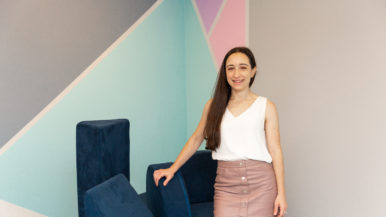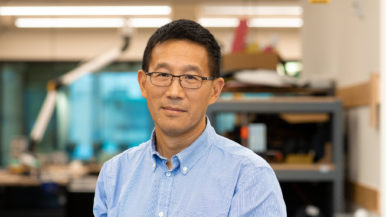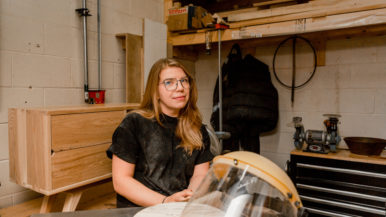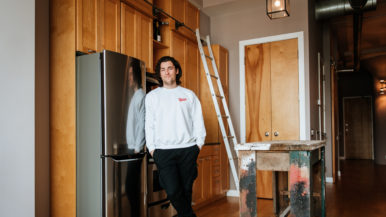“I treated the first Covid-19 patient in Canada”: A Toronto ER doctor’s story

Ever since the Covid-19 outbreak spread beyond China, it was likely only a matter of time before we got our first positive case in Canada. We just didn’t know when or where. It was early in the evening on January 23, when paramedics brought a 56-year-old man with a fever and a cough to Sunnybrook, where I work as an emergency doctor. The man told them he’d returned a day earlier from a three-month trip to Wuhan. The paramedics were concerned: he met all three criteria then considered to be risk factors for Covid-19: a cough, fever and travel history to China.
At the time, there hadn’t been a positive case in Canada. But our emergency department was prepared for the patient’s arrival. I had veteran nurses by my side who’d treated patients during the 2003 SARS outbreak. Other than being very careful while putting on their protective equipment—including a mask, face shield and gloves—the nurses seemed no more concerned than they normally would have been while seeing a sick patient.
The patient was brought in through a side entrance and isolated in a negative pressure room; it has its own self-cleaning air source separate from the rest of the emergency department. The nurses swabbed his nose and throat—tests later came back positive for Covid-19, as the paramedics had feared.
When I came in to see the patient after putting on my protective equipment, he looked like someone who had the flu. He was coughing, sweaty and weak. It was hard to know if he was in distress or not because there was a language barrier—the patient mainly spoke Chinese—but it must have been terrifying to find himself in an isolation room surrounded by doctors and nurses in all that protective gear. So much of medicine is non-verbal communication and it’s hard to do that when all the patient can see of you is your eyes. I’m often with people in the most vulnerable moments of their lives, and this time was no different. I tried to be as comforting as one can possibly be while covered head-to-toe in protective gear.
Of course, there wasn’t (and still isn’t) any antibiotic to treat Covid-19, so all we could do was isolate the patient, make sure he was getting lots of fluids and monitor his vitals for signs of secondary infections. Fortunately, he never needed oxygen support and started recovering over the next few days. Eight days later, he was well enough to be discharged and self-isolate at home. Generally, a patient is released when they’re no longer in respiratory distress, eating and drinking well and have a support system at home.
Things went quite smoothly with our first Covid-19 patient, but the bigger challenge was when more patients of concern started coming to Sunnybrook. We had our next potential positive case a few days after our first one, then we got up to a couple cases each day, and it’s continued to ramp up ever since. At first, we had a dedicated screener in the front of the ER whose sole job was to ask every patient entering if they have symptoms that could suggest Covid-19. More recently, that’s turned into dedicated screeners at every entrance to the hospital. If they have symptoms, they’re immediately given a mask and isolated in a room.
The protocols for seeing Covid-19 patients haven’t changed much, but they are time-consuming. There are specific steps for safely putting on and taking off protective equipment; doing those things incorrectly can lead to contamination and get staff and vulnerable patients sick. So there’s no rushing it. When it was one patient, it wasn’t so onerous, but as the numbers have gone up, it’s been an added but necessary stress on all of us.
With the volume of people at risk coming in now, we’ve also had to get creative with where to safely see them. We’ve had 15 positive cases so far, and it’s next to impossible to put every patient in negative pressure rooms like we did with that first one. As long as the patient is in isolation and the room is properly cleaned, a negative pressure room isn’t needed. We’re now treating people in rooms typically used for training and research purposes, and we’ve even brought them into a little-used decontamination room.
Not only do we have to figure out where we can see potential Covid-19 patients, we need to make sure we’re treating and discharging them without putting vulnerable people at risk, when it’s vulnerable people who typically come to an emergency department. That’s the other thing, too—we still have to treat all the patients who come in for other emergencies. Some people with minor symptoms are also coming in concerned about having Covid-19, and that’s added to our department’s burden. I can’t blame them for seeking a doctor’s opinion. People are concerned, and I just do my best to reassure them.
Everyone’s workload has gone up, from physicians like me to first responders, nurses and even the cleaning staff who make sure the isolation rooms are properly decontaminated. We’re anticipating the volume of cases to keep climbing, too, as the potential for Covid-19 to be transmitted within the community increases.
Even though I’m a physician, I’m still a human being. It’s hard to not be affected by everything in the news and on social media about Covid-19. If you told me two weeks ago that the NHL and NBA were going to suspend their seasons because of Covid-19, I would have said that sounded like the stuff of movies. Now I can’t help but think, “What’s going to happen next?”
The elderly are statistically more vulnerable, so I’m especially worried about my 81-year-old mother up in Ottawa, even though she’s in good health. I’ve been in touch with my family a lot the past few weeks, and they ask me the same question I keep hearing from patients: “What kind of symptoms should I be worried about?” While I can answer that, the question I can’t answer is when this threat will pass. I wish we knew when this is all going to go away. Then I could say we just have to tough it out until a certain date, but I’m not sure when that is going to be, and I don’t think anyone else really knows either. What I do know is things aren’t going to get better in the next few weeks, and in all likelihood they are going to get much worse. We all need to be prepared and to do our part.
But with all this going on, I try to maintain perspective. I remind myself that I have faith in the system, as well as in myself and my fellow humans. We need to maintain our humanity throughout this. We may be told to keep our social distance, but we can still smile and be kind and patient with one another. I think that’s especially important in times like these, when people are scared. And that doesn’t apply just to me. It applies to everybody. Although it is absolutely critical we maintain our social distance, we need to support each other through this, no matter what our profession or walk of life.





